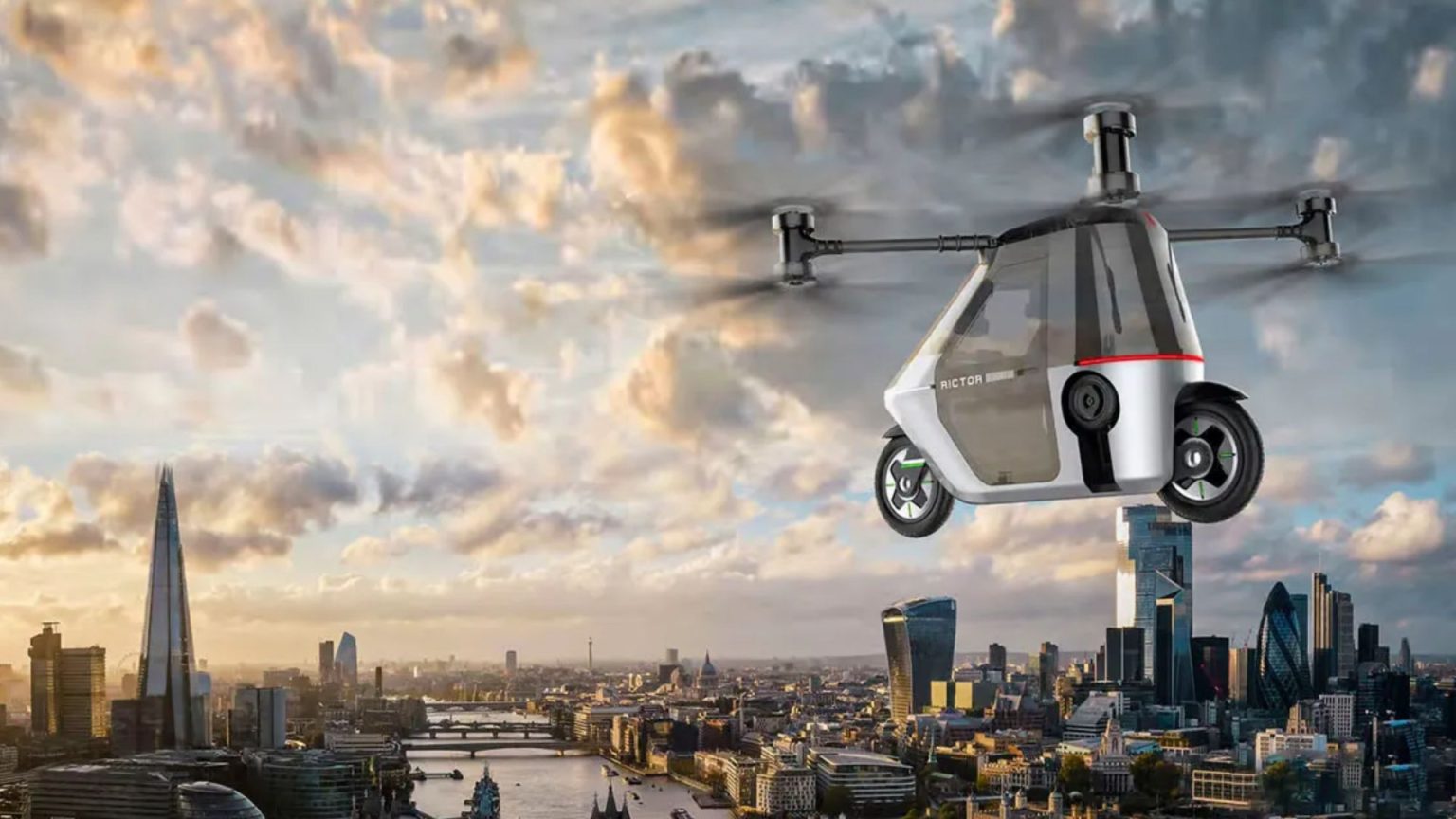The unveiling of the Skyrider X1, a “flying motorcycle” prototype by Chinese company Rictor, has sparked excitement and speculation about the future of personal transportation. This innovative vehicle promises a seamless transition between road and air travel, potentially revolutionizing how we commute and explore. While still in its early stages, the Skyrider X1 presents a compelling vision of a world where personal flight becomes a readily accessible reality.
The Skyrider X1 is designed to function as both a street-legal electric moped and a compact aircraft. On the ground, it operates as a conventional two-wheeled vehicle. When airborne travel is desired, four foldable arms extend, revealing integrated propellers. After the propellers are activated, the user simply inputs their destination, and the autonomous flight system takes over, navigating the vehicle to the specified location. This automated functionality eliminates the need for complex piloting skills, making the Skyrider X1 accessible to a wider range of users.
Two versions of the Skyrider X1 are planned: the base model X1 SL and the upgraded X1 SX. The X1 SL offers a flight time of up to 25 minutes, while the X1 SX, equipped with a larger battery, extends the flight duration to 40 minutes. Both versions incorporate a safety parachute for emergencies. The construction of the Skyrider X1 utilizes lightweight yet durable materials like carbon fiber and aviation-grade aluminum, ensuring both airworthiness and road resilience.
The Skyrider X1’s design prioritizes user-friendliness. Unlike traditional helicopters, which require extensive training and expertise, the Skyrider X1 features automated takeoff and landing functions. This simplification removes the complexities of manual control, allowing users to focus on their destination rather than the mechanics of flight. A real-time weather and environmental adaptability feature further enhances safety and efficiency by automatically adjusting the vehicle’s speed and altitude to optimize the flight path in response to prevailing conditions. For those who prefer a more hands-on experience, manual control is also available via a joystick.
The projected market price for the Skyrider X1 is approximately $60,000, with an anticipated release date in the coming year. Its unveiling at the CES tech convention in Las Vegas generated considerable buzz, showcasing the potential of this innovative technology. However, it’s important to acknowledge that the Skyrider X1 is still in its prototype phase. Rictor, the company behind the project, has primarily focused on e-bike production in the past, and the Skyrider X1 presentation lacked crucial details such as flight test data and a functional demonstration model.
Despite the excitement surrounding the Skyrider X1, several challenges and considerations remain. The limited flight time, currently capped at 40 minutes, restricts the vehicle’s range and practicality for longer journeys. The relatively high price point may also limit its accessibility to a broader consumer base. Furthermore, regulatory hurdles related to airspace management and certification will need to be addressed before widespread adoption can occur. The absence of concrete evidence regarding the Skyrider X1’s flight capabilities, including test flights and performance data, necessitates further scrutiny and validation before its potential can be fully assessed. The successful development and commercialization of the Skyrider X1 hinge on addressing these challenges and demonstrating its viability through rigorous testing and regulatory compliance. Nonetheless, the concept represents a bold step towards a future where personal air travel becomes a tangible possibility.




